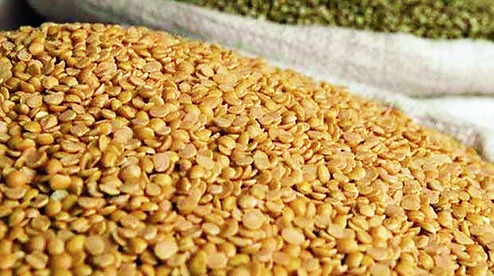
New Delhi, May 23: Five years after sequencing the pigeonpea genome, Indian scientists have identified Madhya Pradesh as the centre of origin of this nationwide staple legume and discovered genes they say will allow the expansion of pigeonpea cultivation.
Scientists at the International Crops Research Institute for Semi-Arid Tropics (ICRISAT) near Hyderabad and their collaborators in Australia, China and the US yesterday announced the results of a new study that has traced the origin and migratory pathways of pigeonpea and several genes important for cultivation.
Archaeological excavations have earlier hinted that India may be the origin of the domestication of pigeonpea, a legume popularly known as arhar or tur dal, but the new study is the first to provide genetic evidence to trace its domestication roots to Madhya Pradesh.
It has also suggested that pigeonpea domestication spread centuries ago from India to present-day Uganda and other parts of eastern Africa from where India now imports pigeonpea to meet its domestic demand.
The study, based on whole genome resequencing of 292 pigeonpea varieties from 23 countries, is expected to help scientists develop superior pigeonpea varieties and increase production and profits for farmers and make this pulse easier to access by the poor.
The scientists believe their findings, published yesterday in the journal Nature Genetics, will help increase production of pigeonpea, a major source of protein, fibre, minerals and vitamins and viewed as a staple that could contribute to nutritional security across developing countries.
"We now have genetic evidence to claim a birthplace for pigeonpea and we've found genes with special features that will allow us to develop superior varieties of pigeonpea," Rajeev Varshney, the project director at ICRISAT who led the study, told The Telegraph .
Agricultural scientists view pigeonpea as India's second most important pulse crop, after chickpea. Although India accounts for over 90 per cent of the global pigeonpea production, the country imports pigeonpea to meet its domestic demand and pulse prices are high and out of reach for vast sections of the country's population.
A major finding from the study is the identification of a gene called efl3 hidden in a wild and uncultivated variety of pigeonpea that makes the plants photo-insensitive. The growth and yield of pigeonpea plants with efl3 are less dependent on daylight hours than regular plants.
"At present, pigeonpea varieties are cultivated only when sufficient daylight hours are available, so a variety from south India may not be cultivated in north India," Varshney said. "Farmers now cultivate under such constraints. If we're able to breed the efl3 gene into high-yielding cultivated varieties, we could then have high-yielding pigeonpea varieties cultivated much more widely than currently possible."
The study has also led the scientists to identify genes that make pigeonpea plants resistant to two key crop diseases - fusarium wilt fungus and sterility mosaic virus.
"These advances provide an effective means to harness the genetic diversity in pigeonpea for bigger yields and enhancing disease resistance," Trilochan Mohapatra, director-general of the Indian Council of Agricultural Research who was not associated with the study, said in a statement released to the media.
Scientists from Visva-Bharati, Santiniketan, and research institutions in Australia, China and the US contributed to the resequencing effort, mainly funded by US AID, the US government's aid agency.










